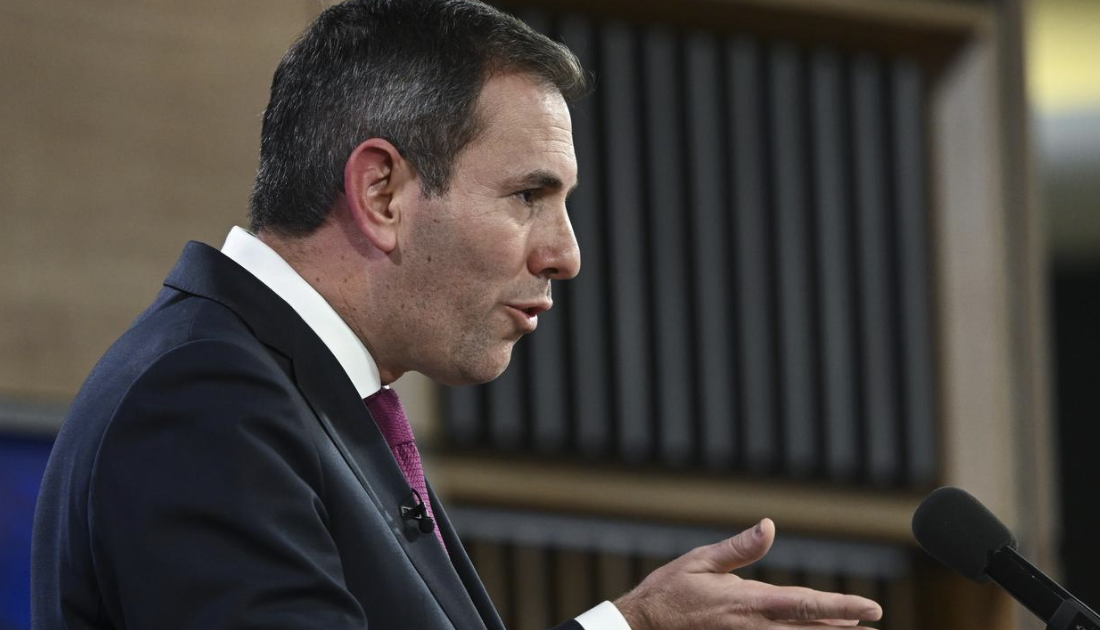Intergenerational Report: Experts say solution to age-old problem is to make us work longer
Business leaders, economists and seniors groups are urging Anthony Albanese to develop an ambitious blueprint aimed at encouraging older Australians to stay in the workforce for longer as a way to ease the growing tax burden on the young while the country’s population ages. The policy prescriptions include raising the pension age again, delaying when superannuation can be accessed, allowing people to work more hours without losing the aged pension, increasing training programs for older workers, and pushing for an end to age discrimination in the workforce.


Article by Patrick Commins and Jess Malcolm courtesy of the Australian.
Business leaders, economists and seniors groups are urging Anthony Albanese to develop an ambitious blueprint aimed at encouraging older Australians to stay in the workforce for longer as a way to ease the growing tax burden on the young while the country’s population ages.
The policy prescriptions include raising the pension age again, delaying when superannuation can be accessed, allowing people to work more hours without losing the aged pension, increasing training programs for older workers, and pushing for an end to age discrimination in the workforce.
The call to rethink how the nation views old age comes after the Intergenerational Report estimated the number of working-age Australians for every person aged 65 and over would plunge from 6.6 in 1982 to just 2.7 by the early 2060s, putting more of the tax burden on young workers.
Mercer head of research David Knox said the bleak forecasts in the IGR could be lessened if people stayed in the workforce for longer, and argued that the definition of “old age” as 65 years was outdated as Australians lived longer and healthier lives.
In 1983, only 5 per cent of those aged 65 and over were employed, against 11.4 per cent now, according to University of Queensland professor John Quiggin.
Dr Knox estimated that adopting a more “realistic” assessment of older Australians’ capacity and willingness to work in past and future decades showed that the population was ageing at only half the pace estimated by Treasury in the IGR.
He said the Albanese government should start backing older workers by extending beyond December it’s temporary “work bonus” scheme, which increased the income they could receive before losing pension to $11,800, from $7800.
“If we want to encourage people to stay or come back into the workforce, then the incentive needs to be clear. I’m not suggesting people should be able to earn hundreds of thousands of dollars without losing their pensions, but perhaps $20-25,000,” he said.
“The government and employers have to recognise that people in their 60s and 70s have skills that we need. These older people may not be the hi-tech or AI generation, but they have a lot of life experience and mentoring and mentoring skills that I think we should encourage.”
Harvey Norman founder Gerry Harvey said the government needed to go further in allowing people to stay at work while receiving a pension, while also looking at tax rates for older people.
“I think if the government can find out how to reward people to stay in the workforce rather than retire, then an awful lot of people would say yes,” Mr Harvey told The Weekend Australian.
“That means they have to look at their taxation system, and the pension system and the way they tax. I think encouraging more people to stay in the workforce should be a priority.”
Australian Industry Group chief executive Innes Willox said the government had not done enough to address “sharp disincentives for older people wanting to participate more in the workforce”.
“Older people will be less likely to work because it means losing pension payments as well as paying income tax on their wage income. There are also cultural and mindset obstacles – if you’re over 45 you are regarded as an older worker by all the metrics, and this needs to change,” Mr Willox said.
Independent economist Chris Richardson said one way to encourage Australians to stay in work was to narrow or close the gap between when people could access their super – currently at 55-60 years – and the pension age of 67. “The government is implying that as part of its white paper on jobs it’s going to be encouraging people to work for longer, and so there should be sticks as well as carrots,” he said.
National Seniors chief advocate Ian Henschke called for a reduction in the aged care income test from 50c to 32.5c in the dollar, which he said would address workforce shortages in critical sectors including aged care, health and disability.
Mr Henschke said the current pension rules discouraged workforce participation by giving elderly Australians “a bonus on one day and a penalty on the next”.
He said the federal government should fund trainee programs for mature-age workers to ensure older Australians are equipped for the workforce.
The Intergenerational Report released on Thursday found that the “falling old-age dependency ratio represents challenges for Australia’s long-term economic growth and fiscal outlook”.
The report projected that a rapidly ageing population would account for 40 per cent of the surge in government spending over the coming decades, and drive the budget into rolling and expanding deficits out to 2062-63.
The pressure to pay for government commitments on aged and health care, the NDIS, defence, and interest payments on the national debt would fall on the next generation of workers – a situation former Treasury secretary Ken Henry branded an “intergenerational tragedy”.
The IGR predicted personal income tax as a share of the total tax would climb from 50 per cent to 60 per cent in 40 years’ time, but Jim Chalmers on Friday said there was nothing “preordained” about future tax settings.
The Treasurer pointed to the start of the stage three tax cuts from mid-2024 as an example of how governments would adjust thresholds over time.
“Part of that is giving back some of this bracket creep, and governments into the future will make those sorts of decisions as well,” Dr Chalmers said.
He said the warnings in the IGR “encourages us to make sure that when we can provide tax relief, we should try and do that”.
Dr Henry said Treasury’s long-term forecasts showed that the wage earners of tomorrow would pay “ever increasing average rates of income tax”.
“That’s a tax – and every economist will tell you this – that will damage economic performance. But worse than that, it sets up an intergenerational tragedy,” Dr Henry, who led a landmark tax review a decade ago, told the ABC.
“Because it’s the young people who are going to be the workers of the future. People who are weighed down with HECS debt, who are going to have to repay a mountain of public debt, who are dealing with the consequences of climate change, who are facing diminishing prospects of ever being able to afford a home of their own – these poor buggers are also going to be the ones who are facing ever increasing average rates of income tax.”
Bob Breunig, the director of the ANU’s Tax and Transfer Policy Institute, said it was not immediately obvious that allowing people to work more without affecting their aged pension eligibility would lure more older Australians back into the labour force.
Professor Breunig said there were other factors at play, adding: “The thing that gets people to work longer is to not give them pension income until a later age.”
